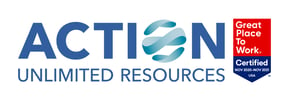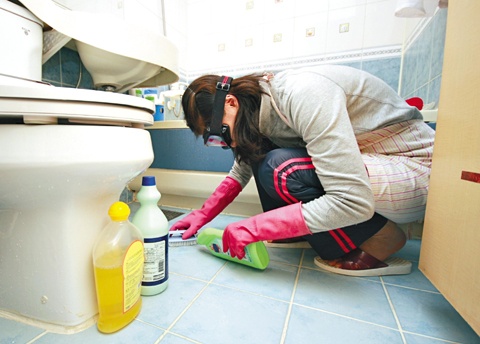When you think clean, do you also imagine the odor of bleach? We all use bleach in some capacity. Bleach is a disinfectant and whitener/brightener. Maybe you use bleach in the laundry to remove stains, or with a mop to disinfect and clean the floor, or as a whitener in grout lines. Whatever the use, I bet you can close your eyes and practically smell bleach fumes right now.
Is bleach clean and healthy or is it a danger to you?
Household bleach is created by mixing caustic soda with water. Chlorine gas is then pumped through this solution and the resulting reaction creates sodium hypochlorite. The final mixture has a sodium hypochlorite concentration up to 6%. Over the last few years, some manufacturers of bleach have created products with higher concentrations of sodium hypochlorite tested by the EPA to have effective germicidal kill claims for C. diff., a bacterium that often spreads in hospitals and nursing facilities.
The smell of bleach in and of itself should not be a focus of concern when used in accordance with labeling directions. The human nose can detect chlorine at .002 ppm, but irritation occurs at much higher levels. In fact, when using bleach, the smell is more noticeable when it is breaking down proteins that make up pathogens. Therefore, the more frequent the cleaning the less perceptible the odor. When cleaning is complete, bleach breaks down into 95% or more water and salt. There is a misperception by some people that bleach contains free-standing chlorine which is harmful to the human body. This is not true. As with all chemical reactions, the resulting product is entirely different than the original components. Like any cleaning chemical with odor, bleach fumes can be vented by opening windows and doors or having a properly running ventilation system. Unfortunately, some people exhibit adverse responses to strong odors even if the airborne concentration does not meet the EPA defined levels for irritation. In a commercial cleaning environment where hundreds or thousands of people may walk into the facility on a given day, the risk of exposure to a person with high sensitivity increases dramatically.
Bleach is not a horrible product, but it is also not the best solution in every application. Not every surface needs disinfection, and if bleach is used it can be significant overkill when a general-purpose cleaner may be a better option. In other applications such as surfaces that contact food, the ideal cleaning treatment is a food-surface sanitizer. As bleach is an aggressive whitener, if it is spilled on clothing or certain surfaces it will damage the fabric or the surface. Therefore, recommendations for bleach applications involve applying the bleach to a cloth, towel, or wiper and not directly to any surface. It is always important to properly handle bleach and every other cleaning chemical, for that matter.
Bleach has many uses in your laundry program, your patient care setting, and your overall disinfection process. When used properly per the directions on the label, bleach is effective and safe. Regrettably, the high likelihood of misuse and improper training leaves bleach as the least safe option where other alternatives will work as effectively and have a lower likelihood of danger to people or damage to facilities. Due to the off-label use and wide variety of bleach options for sale with differing dilutions, many cleaning guidelines, including the Delaware Administrative Code, have been adjusted to remove bleach as an acceptable disinfecting solution.
If you are unsure whether bleach is the best option for your cleaning job, don't worry, you are not alone. Consider reviewing additional information about specific areas of cleaning. The website for the International Sanitary Supply Association, or ISSA, has valuable information to help. In addition, we at Action Unlimited Resources have compiled a comprehensive guide in our ULTIMATE CLEANING SUPPLIES LIST. Click the link below for more information.



Enjoy this blog? Leave a comment or ask a question!